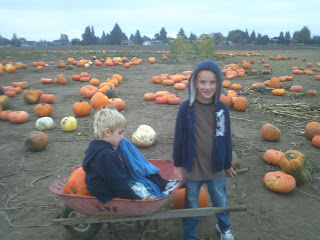Anyone who has spent time around my little Noah has experienced him throwing himself on you, biting or hitting you. You have probably seen his odd choice in toys: sand, dried beans, anything he can fill and dump (and throw). These are more than just naughty or quirky behavior. Noah has sensory processing disorder in addition to his other diagnosis.
Most children with Sensory Processing Disorder are sensory avoiders, the kids who won't walk barefoot on grass or eat food with a certain texture or can't stand the seam on their socks. Noah experiences some of that, but he is mostly at the opposite end of the spectrum, he craves sensations. This is a disorder that is difficult to explain, below is excerpts of an article by Beth Arky of the Child Mind Institute that I think does a pretty good job explaining sensory processing disorder. (here is a link to the entire article http://www.childmind.org/en/posts/articles/2011-10-26-sensory-processing-issues-explained)
Most children with Sensory Processing Disorder are sensory avoiders, the kids who won't walk barefoot on grass or eat food with a certain texture or can't stand the seam on their socks. Noah experiences some of that, but he is mostly at the opposite end of the spectrum, he craves sensations. This is a disorder that is difficult to explain, below is excerpts of an article by Beth Arky of the Child Mind Institute that I think does a pretty good job explaining sensory processing disorder. (here is a link to the entire article http://www.childmind.org/en/posts/articles/2011-10-26-sensory-processing-issues-explained)
At first, SPD parent blogger Hartley Steiner couldn't understand why her son Gabriel's psychologist suggested that he had SPD; after all, he didn't fit the avoidance profile most people think of when they hear "sensory issues"—kids who cover their ears or won't try new foods. As she wrote in her blog, Gabriel was "fine with loud noises, loved water, mud, hot salsa," Steiner says. "He would climb to the tippity top of a play structure—and stand on top of it. No, my kid was not at all adverse to sensory stimuli—as a matter of fact, he couldn't get enough."
It took a year, and reading Carol Stock Kranowitz's seminal book, The Out-of-Sync Child, for Steiner to realize there are two types of kids with SPD: sensory seekers and sensory avoiders. Those like Gabriel, who seek input, "are often considered 'behavior problems,' 'hyperactive,' 'difficult,' 'stubborn,' 'coddled.' Many of us parents have been blamed, told our kids need more discipline, or that they are 'in need of a good spanking.'" Those who perceive things too intensely are avoiders; this can translate into refusing to brush their teeth or have their faces painted. To make things even more complicated, kids can be both seekers and avoiders and have both proprioceptive and vestibular challenges, along with issues relating to the traditional five senses.
Proprioceptive receptors are located in the joints and ligaments, allowing for motor control and posture. The proprioceptive system tells the brain where the body is in relation to other objects and how to move. Those who are hyposensitive crave input; they love jumping, bumping and crashing activities, as well as deep pressure such as that provided by tight bear hugs. If they're hypersensitive, they have difficulty understanding where their body is in relation to other objects and may bump into things and appear clumsy; because they have trouble sensing the amount of force they're applying, they may rip the paper when erasing, pinch too hard or slam objects down.
The vestibular receptors, located in the inner ear; tell the brain where the body is in space by providing the information related to movement and head position. These are key elements of balance and coordination, among other things. Those with hyposensitivity are in constant motion; crave fast, spinning and/or intense movement, and love being tossed in the air and jumping on furniture and trampolines. Those who are hypersensitive may be fearful of activities that require good balance, including climbing on playground equipment, riding a bike, or balancing on one foot, especially with eyes closed. They, too, may appear clumsy.
Peske sums up the way sensory issues can affect kids this way: "If you're a child who is oversensitive to certain sensations, you are not only likely to be anxious or irritable, even angry or fearful, you're likely to be called 'picky' and 'oversensitive.' If you rush away because you're anxious or you're over-stimulated and not using your executive function well because your body has such a powerful need to get away, you're 'impulsive.' If you have trouble with planning and executing your movements due to poor body awareness and poor organization in the motor areas of the brain, you're 'clumsy.' Because you're distracted by your sensory issues and trying to make sense of it all, you may be developmentally delayed in some ways, making you a bit 'immature' or young for your age."
See, Noah isn't a jerk! Noah's sensory issues are his most exasperating behavior for me. His behavior gets defined as aggressive which makes spending time with peers extremely difficult. Time with peers would be incredibly helpful for him, but he is too "hitty" for other kids to want to play with him. Hopefully with continued therapy and time at school these sensory issues will lessen or at least manifest themselves in another, more socially acceptable, way. Unfortunately this isn't an issue with a quick fix. But we will keep working on it. Our outings are one way we hope will help him learn to control his impulses and learn to manage himself in public. Wish us luck!








